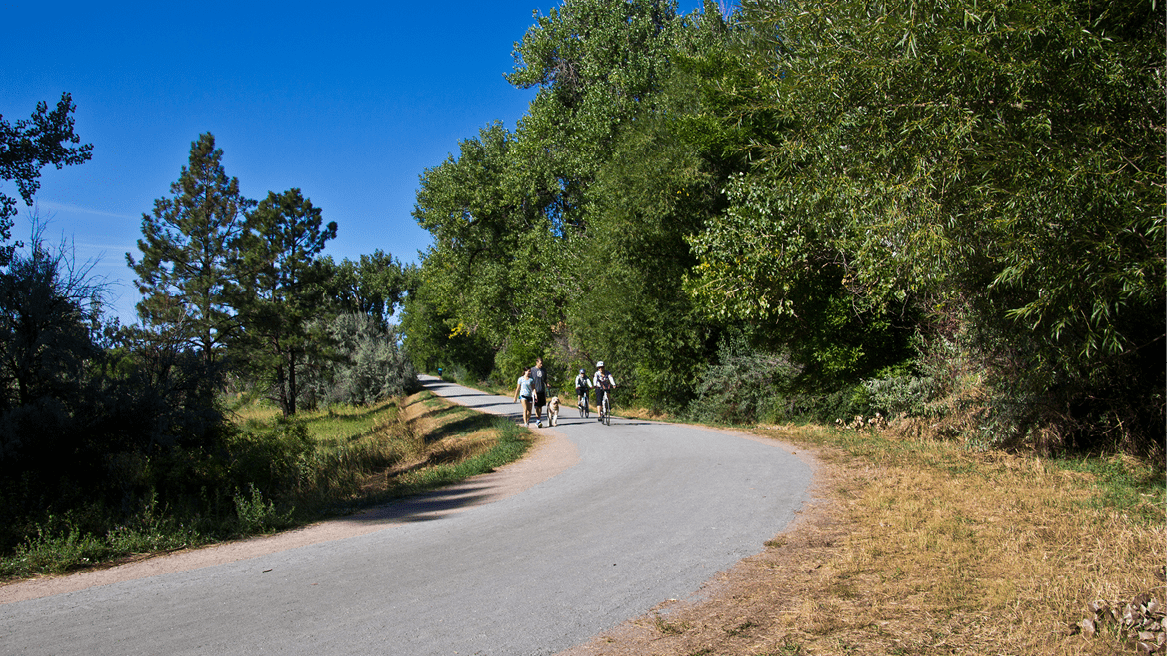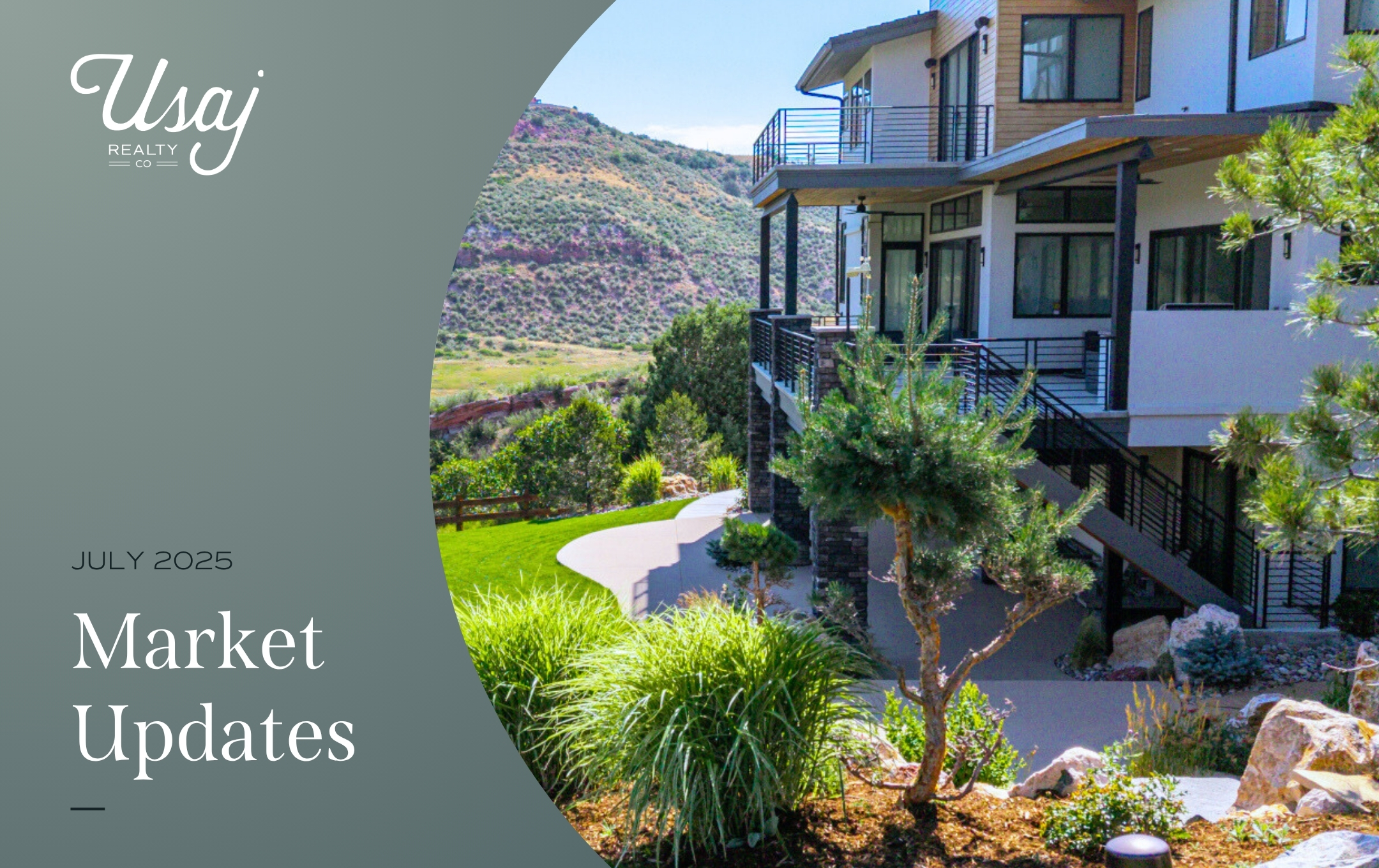Major Improvements on the Way for High Line Canal
Ditch the ditch tag — it’s not your average irrigation ditch anymore.
Once a lowly and ineffective water corridor, the High Line Canal has found new life as one of the most popular trails in the Denver metro area.
Meandering 71 miles through four counties and 11 governmental jurisdictions, the High Line Canal is an recreational oasis for residents of Denver and its southwestern, southern and eastern suburbs. Once dedicated to providing irrigation to the region’s crops and fields, the corridor is now a treasured venue for walking, biking, viewing wildlife and enjoying a bit of calm in the city.
And better yet, multiple improvements and projects are in the hopper for this trail which emerges from Waterton Canyon near Chatfield Reservoir and continues its circuitous route to the plains east of Aurora. These plans are designed to improve public access to the Canal as well as maintain and foster the growth of vegetation along the way.
It’s estimated that over 500,000 people use the canal in a given year. From the dirt trail south of Hampden Avenue to the asphalt surfaces of Denver and Aurora, the High Line Canal and its serpentine route connects communities and offers a unique perspective of the Front Range. Cottonwoods over 100 years old serve sentry over much of the Canal while 199 species of birds, 28 types of mammals and 15 varieties of reptiles fly, scuttle and slither through the Canal.
Denver Water Owns the High Line Canal
While the Canal is owned by Denver Water, the stewardship of this greenbelt is divided among 11 jurisdictions: Arapahoe County, Douglas County, Centennial, Littleton, Highlands Ranch Metropolitan District, South Suburban Parks and Recreation, Greenwood Village Parks and Trails, Cherry Hills Parks and Trails, Denver Parks and Recreation and Aurora Parks and Recreation.
All of the governmental municipalities provide maintenance operations along the trail to keep it viable and healthy. Whether it’s improving the dirt surface, adding signage or coordinating capital projects, the entities understand the importance of curating all the elements that make the Canal unique.
Furthermore, the High Line Canal Conservancy was established in 2014 to represent community interests in the vision and master plan of the Canal. Working together with the various municipalities, the HLCC has become the integrating force in protecting the Canal’s future.
The coordination of efforts among these agencies is leading to a long range plan for the High Line Canal and how it can best be improved and maintained for generations to come. As a result of a number of public forums and the input gained from them, people will be seeing many changes along the Canal, sooner rather than later.
Here are a few of the near term improvements and additions:
Water In and Along the Canal
“Water is the driving force of all nature.” — Leonardo da Vinci
Da Vinci’s remark is especially poignant for Colorado residents this year with dry conditions, hot temperatures and little rain in the Denver metro area. In the mountains, conditions aren’t much better with major wildfires burning and little residual snowpack from poor snow levels.
When the Canal was originally developed in 1883 to carry ¾ of a billion gallons of water per day, its goal was to cultivate 50,000 acres of crops. However, it fell short of its goal due to competing water rights on other area irrigation ditches. Furthermore, the design of the Canal proved inefficient in its delivery of water. Denver Water, which took over the operation of the Canal in 1924, estimates 60-80 percent of the water flow is lost to seepage and evaporation.
While intermittent water still flows through the Canal, it’s design isn’t conducive for consistent irrigation purposes. As a result, Denver Water limits the amount of water it releases upstream into the Canal. Yet, the various municipalities recognize the importance of keeping the greenbelt “green” and maintaining some water throughout the corridor. Protecting the tree canopy and the underlying vegetation has become a top priority in the long range plan of the Canal. Currently the organizations are looking into options involving storm water diversion.
The Need for more Water
“We need the presence of water in the Canal — this has been a concern of the public — and we obviously need the trees and plants to get adequate water, especially when flows stop,” said John Hoesterey, planning manager for the High Line Canal Conservancy. “Any detention ponds are expensive. Right now, we are in the planning stages of working on how to best get storm water into the Canal. Using the Canal as an opportunity to take on storm water runoff is a better investment than some of the other traditional methods.”
Case in point: Redirecting storm water into the Canal is currently being implemented by Shea Homes in the development of the Solstice planned community, located south of Chatfield Reservoir, in Highlands Ranch. There will be 1,100 homes built in this area, and the company will be taking a significant step in alternative storm water management by funneling water directly into the Canal. By doing this, they will ease the amount of infrastructure necessary for storm water diversion and assist with the efforts to get a water source in the Canal.
Furthermore, the HLCC has received a grant from the Pisces Foundation which “advances strategic solutions fornatural resource challenges and prepares the next generation by supporting environmental learning, collaboration, innovation, and working respectfully in the community.”
“That money will be used for well-targeted projects including moving stormwater into the Canal, enhancing vegetation and improving the overall character of the Canal,” said Hoesterey.
Maintaining and Enhancing the Tree Canopy
“Trees are poems that the earth writes upon the sky. ” ― Kahlil Gibran
There are an astounding 24,000 trees that line the High Line Canal. Over 40 percent of the tree canopy is made up of majestic 70-foot plus cottonwood trees, many of which are over 100 years old and nearing the end of their natural lifespan. Others are young saplings striving to make it with limited water source. This changing landscape requires careful planning to assure the Canal is able to sustain a healthy ecosystem.
“We have established a long term contract with arborists to manage the tree canopy to improve safety and get the dead trees out,” said Hoesterey. “This management includes trimming overhanging limbs and improving the tree canopy. This is a two-year program (started in June) and 500 trees will be treated. But we’ve identified about 4,000 trees that need some kind of maintenance along the Canal.”
Trees that pose immediate safety concerns will be removed or, in some cases, partially removed to maintain wildlife habitat. Other top priority trees will be trimmed and pruned for safety in order to enhance the quality of the tree canopy and extend the life of the trees.
This current program, addressing only the highest priority trees, is possible because of joint funding from Denver Water and the jurisdictional partners, as well as private citizens through the Conservancy. This is only the beginning, and continued support and funding is necessary to assure that a healthy tree canopy and underlying vegetation are maintained, according to the HLCC.
Physical Improvements/Access to the High Line Canal Trail
“I could never resist the call of the trail.” — Buffalo Bill
There will be three significant physical additions along the High Line Canal that will drastically improve access to the Canal in the upcoming years. The most immediate will be construction of an underpass at Hampden Avenue and Monroe Street at the Denver-Cherry Hills border and another beneath Colorado Boulevard, north of Hampden. In between the underpasses will be 10-foot paved trail and retaining wall, paralleling the 17th fairway of the Wellshire Golf Course. This will vastly improve the connection of the High Line Canal Trail in Cherry Hills to its counterpart along Eisenhower Park in Denver, and will create a much safer passageway for both pedestrians and cyclists. Construction is expected to begin later this year.
The second major construction project will be a two-fold plan for the Canal at I-70 and Tower Road in northeast Denver and Aurora. In early- to mid-2019, the section of the Canal from I-70 to Green Valley Ranch will see upgrades of the trail to meet Aurora’s concrete trail standards. Spruced up landscaping, intersection improvements and signage enhancements will all improve the character of and access to the trail for residents of Aurora and Denver. Further down the road, plans call for an underpass at I-70 and Tower Road which is currently in the design phase.
Finally, benefiting the residents of Highlands Ranch, is the Santa Fe improvement project. A planned underpass under Santa Fe, south of C470, will ease and increase access to this section of the Canal which sees heavy usage from the populace of the southwest metro area. The construction of this upgrade will begin in 2019. Additionally, there will be updated and improved signage and other trail enhancements to assist with wayfinding in the area.
Support the High Line Canal
To find out more on how you can support improvements and get involved in fundraising events for the High Line Canal, visit the High Line Canal Conservancy. There is a full calendar of upcoming events designed to educate people about the resource and how they can help keep the trail viable. Also, check out Usaj Realty’s Things to do in Denver — the Ultimate List and learn more about all the fabulous outdoor recreation opportunities in the Denver area.



